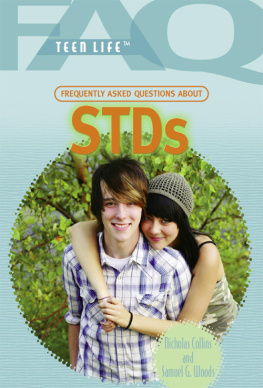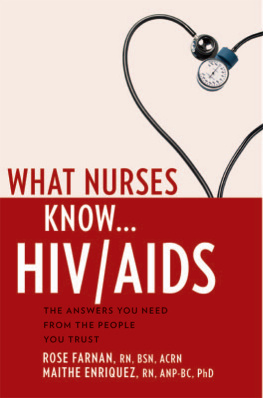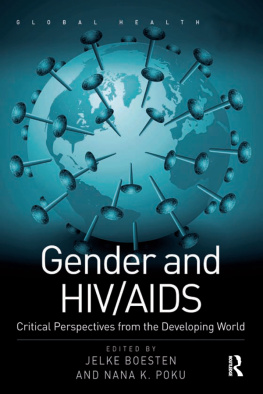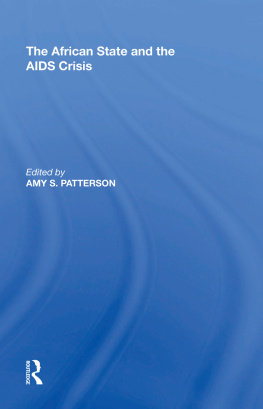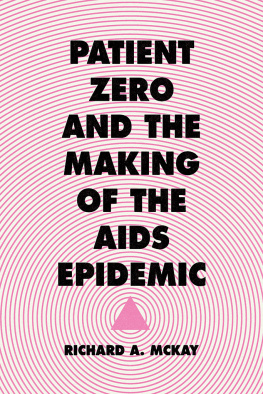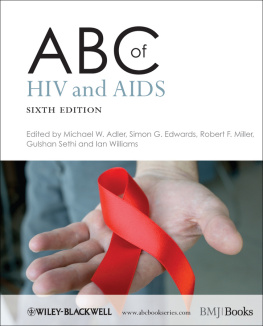The life cycle of HIV shows the stages that the virus goes through, starting with its entry into human cells and ending with its replication and the release of new virus particles into the blood. The stages involved are as follows. Stage 1: HIV glycoprotein attaches to a CD4 receptor and forms HIV RNA. Stage 2: HIV RNA is converted into HIV DNA. Stage 3: HIV DNA is fused with the host DNA. Stage 4: HIV mRNA and HIV protein chains are formed. Stage 5: HIV proteins are divided into smaller individual proteins. Stage 6: The newly assembled virus buds push out from the CD4 cell.
There are four columns. Nucleoside reverse transcriptase inhibitor (NRTI) pairs: Drug or Drugs, Forms and Brand Names, Advantages, and Disadvantages. Row entries are as follows. Row 1: Abacavir/lamivudine ABC/3TC; Epzicom or generic and part of Triumeq ABC/3TC/DTGtg; No kidney or bone toxicity. Coformulated with DTG as a recommended initial regimen; Must pre-test with HLA B*5701 to avoid ABC hypersensitivity reaction. Less effective than TDF/FTC when combined with EFV or ATatV/r in people with viral loads above 100,000. May increase risk of heart attack. Unlike tenofovir-based combinations, not sufficient for treatment of hepatitis B. Row 2: Tenofovir AF/ emtricitabine, TAF/FTC; Descovy, and part of Genvoya, Odefsey, Biktarvy, and Symtuza; Less kidney and bone toxicity than tenofovir DF. A recommended initial NRTI pair with several third agents. Can be used to treat both HIV and hepatitis B; Does not lower lipids like tenofovir DF. Will be more expensive than tenofovir DF/FTC when that becomes generic. People receiving TAF/FTC-containing regimens gain more weight than those on TDF/FTC-containing regimens. Row 3: Tenofovir DF/emtricitabine, TDF/FTC; Truvada and part of Atripla, Complera, and Stribild, TDF/FTC/EVG/c; Lowers lipid levels Can be used to treat both HIV and hepatitis B; Can cause kidney problems, especially in people with other risks for kidney disease, diabetes, high blood pressure. Causes more loss of bone density than other drugs. Row 4: Tenofovir DF/lamivudine, 3TC; Generic and part of Delstrigo; Less expensive than TDF/FTC and TAF/FTC; Similar to TDF/FTC. Row 5: Nonnucleoside reverse transcriptase inhibitors (NNRTIs). Doravirine, DOR; Pifeltro and part of Delstrigo; Less rash and fewer central nervous system side effects than efavirenz. Fewer drug interactions than rilpivirine. Favorable lipid profile. Can be taken with or without food. Different resistance profile compared with other NNRTI. Available as an STR, Delstrigo; Not available with TAF/FTC as an STR. Not tested in clinical trials against an integrase inhibitor. Row 6: Efavirenz, EFV; Sustiva or generic, and as part of Symfi or Symfi Lo; Was part of the first STR , so extensive clinical experience globally. Remains in blood for a long time, so forgiving of missed doses. Retains activity even a high viral loads; Can cause neurologic or psychiatric side effects, especially in the first few weeks, but long-term effects can also occur. Can cause rash. Resistance common if treatment fails. Most common form of transmitted resistance is to efavirenz. No TAF version available. Row 7: Etravirine, ETR; Intelence; Often active even when there is resistance to EFV and NVP. Can be dissolved in water for those who cannot swallow pills; Not recommended for initial therapy. Many drug interactions. Tablet formulation is gritty, difficult for some to swallow. Row 8: Nevirapine, NVP; Viramune, Viramune XR, or generic; Inexpensive; Can cause severe liver toxicity or skin rash during first few weeks, especially in women with pretreatment. CD4 counts above 250 or men with counts above 400. Resistance common if treatment fails. Row 9: Rilpivirine, RPV; Edurant and as part of Complera, Odefsey, or Juluuca; Less rash and fewer neurologic side effects than EFV. Does not raise lipids as much as EFV; Must be taken with a meal. Cant be taken with proton pump inhibitors and other drugs used to treat reflux and ulcers. Resistance common if treatment fails. Not as effective if viral load > 100,000 or CD4 cell count < 200. Row 10: Protease inhibitors, PIs All should be given with the boosters ritonavir or cobicistat. Atazanavir, ATV plus ritonavir, RTV or atazanavir/cobicistat, c; Reyataz or Evotaz, ATV/c; Resistance uncommon with failure. Only PI not linked to increased risk of cardiovascular disease; Many drug interactions. Can cause jaundice Should be taken with food. Can cause kidney stones, gall stones, or kidney trouble. Row 11: Darunavir, DRV plus ritonavir or darunavir/cobicistat, c; Prezista or Prezcobix, DRV/c and part of Symtuza; Best tolerated PI. Resistance unlikely with failure. Only PI available as a single tablet regimen, Symtuza, TAF/FTC/DRV/c; Many drug interactions. Should be taken with food. May cause rash. May increase cardiovascular risk. Row 12: Lopinavir/ritonavir, LPV/RTV; Kaletra or generic; None; Many drug interactions. Highest risk of GI side effects Increases lipids more than ATV or DRV. May increase risk of cardiovascular disease. Row 13: Integrase strand transfer inhibitors, INSTIs. Bictegravir, BIC; Biktarvy, TAF/FTC/BIC; Few side effects. Few drug interactions Higher barrier to resistance than RAL or EVG. Only unboosted INSTI with tenofovir as part of an STR; Raises serum creatinine but does not damage kidneys. Associated with more weight gain than non-INSTI based regimens. Cannot use with active TB since rifampin lowers levels. Row 14: Dolutegravir, DTG; Tivicay or part of Triumeq or Juluuca or Dovato; Few side effects. Few drug interactions. Higher barrier to resistance than RA L or EVG. Can be used with active TB, dose doubled with rifampin. Two-drug regimens of DTG / RPV, Juluuca and DTG /3TC, Dovato both options for people who cannot take ABC or tenofovir; Raises serum creatinine, but does not damage kidneys. Associated with more weight gain than non-INSTI based regimens. DTG increases metformin levels, may require dose reduction. DTG /3TC not tested in people with baseline viral loads > 500,000. DTG /RPV only approved for switch therapy, not initial treatment. Row 15: Elvitegravir, EVG; Part of Stribild or Genvoya; Few side effects. Better tolerated than EFV; Many drug interactions. Should be taken with food. Increases serum creatinine, but does not damage kidneys. Resistance barrier lower than BIC and DTG. Row 16: Raltegravir, RA L; Isentress or Isentress HD; Few side effects. Few drug interactions; Two pills. No coformulation available. Resistance barrier lower than BIC and DTG.
CONTENTS
Contents
Questions 16 provide information for people whove just been diagnosed with HIV.
Questions 714 tell you what you need to know about HIV, your immune system, and the disease in order to understand your condition, your healthcare provider, your treatment options, and how to live with HIV.
Questions 1517 are written for people who havent been diagnosed.
Questions 1821 provide information on finding and paying for medical care.
Questions 2226 discuss the laboratory tests and vaccinations you need.
Questions 2734 discuss things you need to know before starting treatment.
Questions 3542 discuss issues important to people who are on therapy.
Questions 4352 discuss side effects and toxicities of antiretroviral drugs.
Questions 5363 provide information on the complications of HIV.
Questions 6473 discuss common symptoms caused by HIV and its treatment and how to deal with them.
Questions 7478 discuss HIV in women and children and HIV treatment in pregnant women.
Questions 7981 discuss other infections that often accompany HIV.
Questions 8284 discuss depression, substance abuse, and other mental health problems.
Questions 8589 discuss relationships, safer sex, and sexually transmitted infections.
Next page

